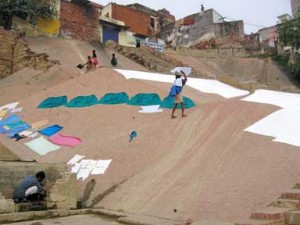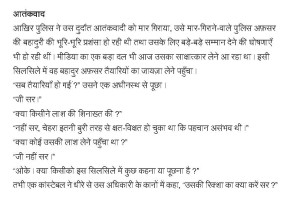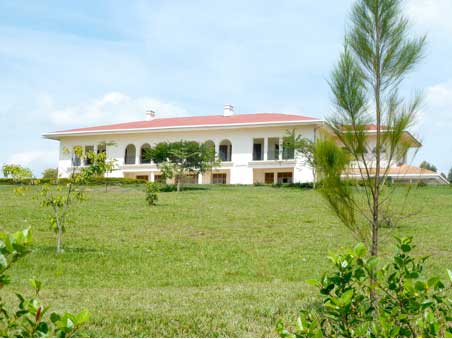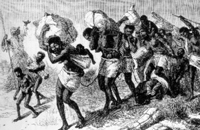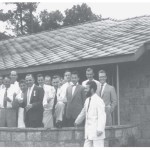T.S. Eliot Reads: The Waste Land
Roz Kaveney – TS Eliot’s The Waste Land: the radical text of a wounded culture
Siegfried Sassoon once wrote a poem complaining about a concert whose audience listened to The Rite of Spring as if it were “by someone dead / like Brahms”, instead of rioting and yelling abuse. Indeed, most of the great works of 20th-century modernism have become part of the canon. People may still occasionally make disobliging remarks about Picasso, say, but we are used to TS Eliot’s The Waste Land – it is assimilated, and no longer regarded as an awful warning of the debased, degenerate way in which things are heading.
Read more: http://www.theguardian.com/waste-land
Laghukatha – Het ZKV in de Hindi-Literatuur
In Nederland is de laatste jaren een nieuw literair genre van de grond gekomen: het zeer korte verhaal, oftewel ‘zkv’. In sommige literaire tradities buiten Nederland bestaat zo’n genre al langer. India is een voorbeeld: het zeer korte verhaal is hier terug te voeren op oude fabels en volksvertellingen, en komt in het Hindi voor vanaf de tijd dat het moderne Hindi is ontstaan (tweede helft 19e eeuw). Het zkv heeft zich in verscheidene tijdvakken en maatschappelijke constellaties weten te handhaven. Ten tijde van de Moghul-dynastie (van de 16e tot de tweede helft van de 19e eeuw) bestond in het Urdu (een zustertaal van het Hindi) een levendige traditie van schetsen en raadsels en cynische commentaren op het doen en laten van de machthebbers. In het midden van de negentiende eeuw bloeide de ‘caféliteratuur’, waaronder de poëzie, als nooit tevoren; aan het hof van de laatste Moghul-keizer Zafar in Delhi, maar zeker ook daarbuiten en onder ‘gewone’ mensen.[1] Read more
Laghukatha – ZKV’s uit India. Terrorisme, Pepsi Cola, Vrees voor de toekomst, Klem
Yograj Prabhakar – Terrorisme
Tenslotte schoot de politie de ongrijpbare terrorist dood en de inspecteur die hem had gedood, werd uitbundig geprezen om zijn moed en er werd bekend gemaakt dat hem een groot eerbetoon ten deel zou vallen. Ook zouden de media hem vandaag in groten getale komen interviewen. In verband hiermee kwam deze dappere inspecteur kijken hoe de voorbereidingen verliepen.
“Is alles klaar?” vroeg hij aan een ondergeschikte.
“Ja meneer.”
“Heeft iemand het lijk geïdentificeerd?”
“Nee meneer, het gezicht was zo verminkt dat het onmogelijk was hem te herkennen.”
“Is er iemand gekomen om het lijk op te vragen?”
“Nee meneer.”
“Oké. Wil iemand hier nog iets over vragen of zeggen?”
Op dat moment fluisterde een agent hem in het oor: “Wat doen we met z’n riksja, meneer?” Read more
The National Art Gallery, A Shining Gem On Rwesero Hill
Not many people probably know that The National Art Gallery (The NAG) in Nyanza is since 2006 a contemporary arts museum in Rwanda. It is even the only one in the great lakes district. The classical building hosting this museum has been constructed at the end of the fifties of the past century and is beautifully located in the scenic hills, just outside Nyanza. It was built for Rwanda’s last king Matara III Rudahigwa, who died in 1959, just before he would move into his modern palace.. Since Mutara’s death, the palace has hosted several judicial institutes, like the High Court and the Supreme Court. The late archeologist and visionair prof. dr. Celestin Kanimba, former DG of INMR, regarded contemporary art as one of the healing means to recover from the1994 genocide. The NAG is part of the Institute of National Museums of Rwanda, which includes 5 various national museums.
Architecture and location
The building, designed by Belgian architect Robert Quintet, has been constructed at the end of the 1950’s. It is beautifully located on top of Rwesero hill. The building and location itself can be experienced as an excellent typical Rwandese attraction, as a masterly mixture of landscape, colonial architecture and royal history.
It turned out to be a lucky shot to change the destiny of the palace into a museum.
In the first place because of the architecture and its surroundings. But even more important is its location in the city of Nyanza, were in former ‘royal’ days Rwandan culture was flourishing. The King’s Palace Museum is near and both museums are located far away from noisy cities like Kigali and Huye. Read more
Gold The True Motor Of West African History: An Overview Of The Importance Of Gold In West Africa And Its Relations With The Wider World
While the prime sources of gold remained more or less where they had always been, hidden from the outside world, along the headwaters of the Rivers Senegal and Niger (Wright 2007: 21).
Towards a Longer Time Frame for African History
Slavery and African slaves have dominated historical perspectives of Africa and its relations with the wider world. Yet, it is gold which has been the most important and enduring element that has shaped and determined West Africa and its interactions with the wider world. For at least 1,500 years gold and not slaves has been the commodity determining not only the region’s economy and history, but also West Africa’s links with the wider world.
Beginning in the late 1700s, understandable humanitarian concerns and philanthropic motives ensured that the focal point within public discussion and history, when dealing with West Africa, came to be centred on the issue of slavery. Focussing on slavery to the detriment of gold and other commodities to some extent ensured that the export of slaves from West Africa came to be halted in the course of the nineteenth century. The persistence of slavery within Africa, as well as the continued smuggling of slaves out of Africa, in many instances served to legitimate the intervention in, and subsequent occupation of, West Africa by Europe’s imperial powers. Ironically, those opposed to colonial rule made grateful use of the historical trope of slavery that existed within European discourse to hasten the end of colonial occupation in West Africa. Thus the discourse that had in many instances been used to legitimate the establishment of colonial rule, was also used to oppose colonial rule. But, and this is the important issue, in both instances it was the trope of ‘slavery’ that determined the manner in which lay and professional observers looked at West Africa’s past. In both instances it was a dehumanising and debilitating view of history that effectively robbed, and continues to rob, West African historical actors of any agency beyond being mere pawns in the West’s insatiable thirst and desire for slaves. The persistence of this negative history continues to rob West Africa of its rightful place in global history.
The focus on slavery has overshadowed and driven from both public and scholarly perception the realisation that West Africa’s history is far more than slavery alone; it is indeed a sad irony of history that the incessant focus on the dark past of slavery has managed to eclipse the bright history of gold in West Africa. A refocus of West African history, away from the past three hundred years to the longer perspective of nearly two thousand years, brings into focus a far more constructive and less passive history of West Africa and its inhabitants. Far from being merely the subject pawns of the deeply exploitative and dehumanising trade and economic systems initiated outside of Africa, a refocus on the role of West African gold in its relations with the wider world, brings to the fore a far more energetic and virile history in which West Africa’s relations with the rest of the world are based on a far greater degree of equality and shared interest.
This essay has been written with the express purpose of drawing to the fore the long history of gold in West Africa so that a new beginning can be made to refocus views of Africa and its people away from a debilitating and ultimately nihilistic focus on slavery. A focus on the long-term history West African gold will bring to the fore an interesting history in which Africans are not merely acted upon but ultimately determined the course of global history and humanity as a whole. Read more
POEM: The Vrije Universiteit And South Africa, From 1880 To The Present And Towards The Future: Images, Practice And Policies
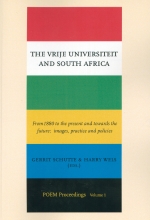 The Vrije Universiteit (Amsterdam) and South Africa share a long history together, dating back to as early as 1880. At times this history has been a turbulent one. The year 1994 marked the beginning of a new period in the relationship between the VU and South Africa. Currently, nearly all VU-faculties are actively cooperating with South African colleagues. But what type of academic knowledge and cooperation is the ‘new’ South Africa actually waiting for?
The Vrije Universiteit (Amsterdam) and South Africa share a long history together, dating back to as early as 1880. At times this history has been a turbulent one. The year 1994 marked the beginning of a new period in the relationship between the VU and South Africa. Currently, nearly all VU-faculties are actively cooperating with South African colleagues. But what type of academic knowledge and cooperation is the ‘new’ South Africa actually waiting for?
Gerrit Schutte, supported by the Faculty of Arts, together with Savusa (South Africa – Vrije Universiteit – Strategic Alliances) organised a mini-conference in October 2004 (called a Publication Oriented Expert Meeting or ‘POEM’ in Savusa jargon). The purpose of this POEM was to look at the future of the relationship between the VU and South Africa, and to investigate whether further continuation or even expansion of the relationship would be in the interest of both VU and South African academics.
SAVUSA POEM Proceedings, Volume 1 – Rozenberg Publishers, 2005
Now online:
Albert Grundlingh – Some Trends In South African Academic History: Changing Contexts And Challenges. (incl. the Introduction of the Proceedings by Harry Wels and Gerrit Schutte)
Tom Lodge – Political Studies In South Africa. A Personal Perspective.
Ena Jansen – A ‘new’ literature.
Flip Smit – ‘New’ Scientific Practice In South Africa With Special Reference To Land Reform.
Gerrit J. Schutte – The Vrije Universiteit and South Africa: 125 years of sentiments and good faith


